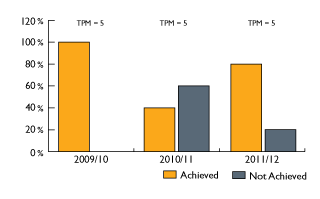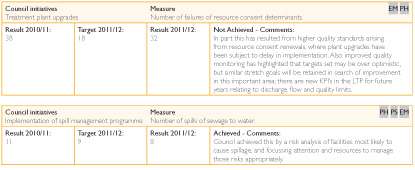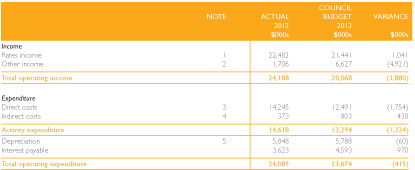At a Glance
Primary Services
- Wastewater treatment and reticulation
Why We Do It
- Council's vision is that the Far North's coastal marine, river waters and lakes are healthy at all times,
so that they support healthy marine and
freshwater ecosystems, recreational use,
fishing and shellfisheries. - Sewage treatment plants, pumping stations and reticulation systems contribute by controlling the quality of effluent and minimising the risk of sewage overflows and spills.
- The work programme is driven by community
expectations about the quality of our environment
and the need for sustainability by reducing our overall impact on the environment, both now
and in the future. - The sewerage activity is one of the core activities
of Council as confirmed by statute in the LGA.
Generally, the LGA requires the continued operation of any sewerage system that Council operated at the time the LGA was passed and the continued operation of any new system that Council constructs after that date.
What Has Changed Since The LTCCP 2009/19?
The following projects have been deferred to allow for resource consent amendments:- Paihia wastewater treatment plant is deferred to 2013/14 subject to a Council decision regarding the methodology related to the Bay of Islands project.
- Kaikohe wastewater treatment plant will commence in 2012/13.
Priorities For 2011/12 |
What We Have / Haven't Achieved |
|---|---|
| Completing the installation of new reticulation at Ngawha | Project has been successfully completed. |
| Completing the installation of new treatment plant at Kaeo | Project has been completed and is in service currently undergoing its commissioning stage. |
| Obtaining the Bay of Islands wastewater treatment plant resource consent | The resource consent has now been obtained. |
| Agreeing the strategy for the implementation of Kerikeri reticulation | Options and funding strategy is currently being evaluated and will be subject to a special public consultation process. |
| Addressing with the community the recently discovered design problems with the Hihi wastewater reticulation | Following community engagement a request for changes to the resource consent to allow non prescriptive less costly processes to be considered was duly agreed with Northland Regional Council. |
| Commencing the upgrade of the Paihia treatment plant subject to the resource consent | Design options for the upgrade have commenced recently following receipt of the new resource consent. |
| Commencing the Awanui and Opua reticulation projects | Both projects have been awarded following tender with construction of the Opua project currently in progress. |
| Obtaining resource consents renewals for Rawene, Ahipara and Kawakawa wastewater treatment plants | Resource consent applications have been made for all schemes which have been notified and subject to resolution of submissions. The Rawene consent has been issued but is subject to appeal at present. |
| Limiting extensions to reticulation in line with falling demand for new development | There have been limited numbers of new connections in line with current development requirements. |
| Reducing operating costs by utilising enhanced biological treatment processes | Worm composting is being used to improve environmental
performance and minimise costs at the Council's new wastewater treatment plant in Kaeo.
The new plant uses wriggler worms to boost the effectiveness of traditional sewage treatment processes. The treatment process will still rely on screens, settling ponds, biological filtration and wetland cells to polish treated effluent. |
| Investigating new technology for wastewater treatment | In addition to vermifilter and floating wetlands Council is also considering sequence batch reactors, high rate filtration and fixed film biological processes. |
Future Issues / Challenges |
Implications |
|---|---|
| Minimising environmental impact | A continued programme of improving environmental awareness throughout the community so that everybody can play their part in protecting our environment.
Action to ensure compliance with the onsite sewage treatment bylaw. Installation of new sewerage systems and treatment plants in currently unserved communities where subsidy support is available. |
| Higher environmental standards in resource consents | Requires upgrade of existing systems and higher specifications for new systems in order to improve the quality of treated effluent. |
| Sewage spills | Requires continued and improved sewer maintenance. |
| Increasing operating costs | Requires new works and upgrades using low operating cost solutions. |
| Climate change | Increased costs incurred resulting from potential impacts of drought, flooding and storms. |
Highlights of Performance

TPM = Total number of Performance Measures
 Performance 2010/11 vs. 2011/12 - has improved
Performance 2010/11 vs. 2011/12 - has improved
Statement of Service Performance
For WASTEWATER the following pages detail:- Service performance information provides levels of service comparative results for 2010/11 and 2011/12 including achievements and issues.
- Financial performance including comparisons against budget 2011/12.
 Print the above sections
Print the above sections

